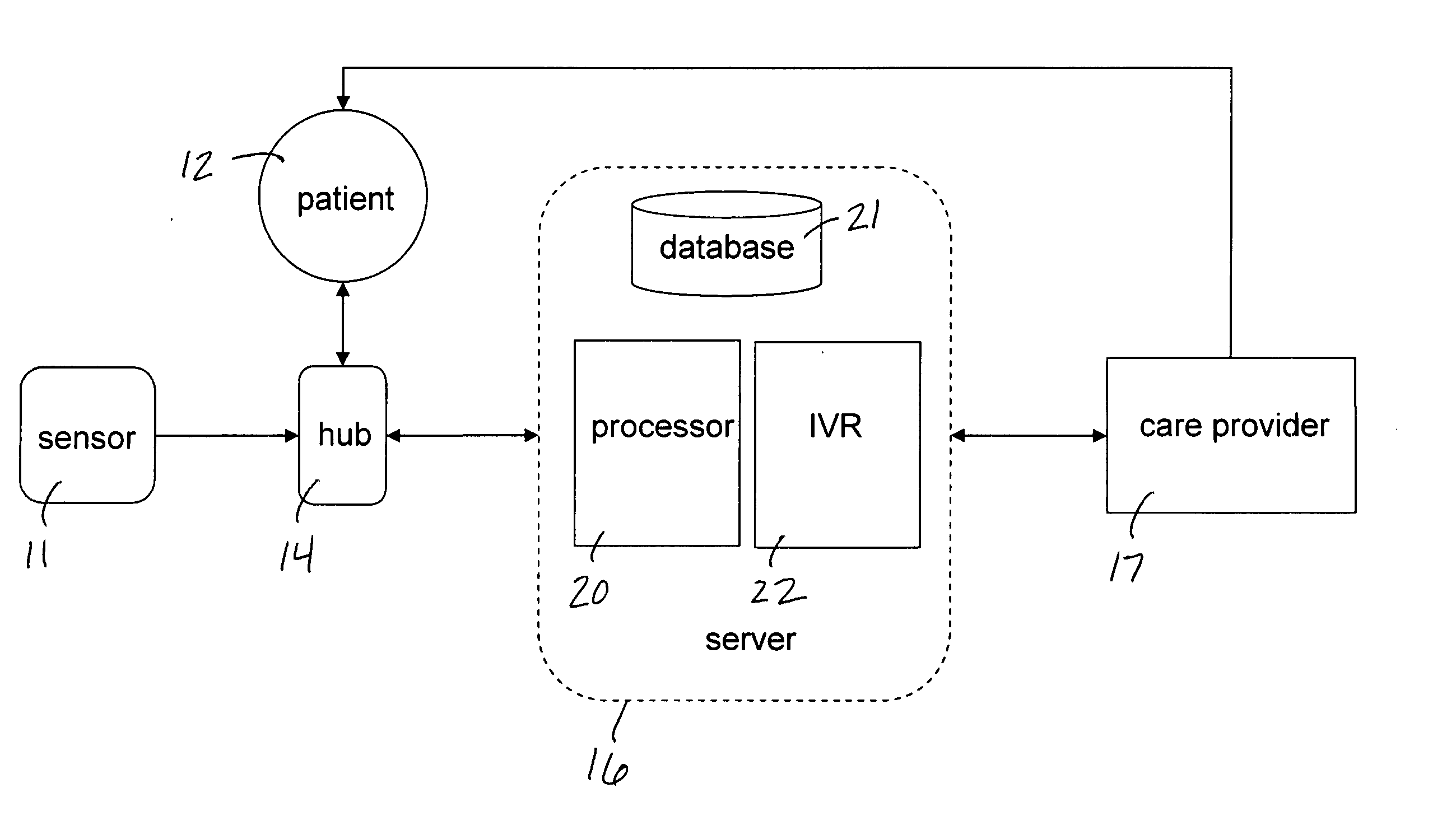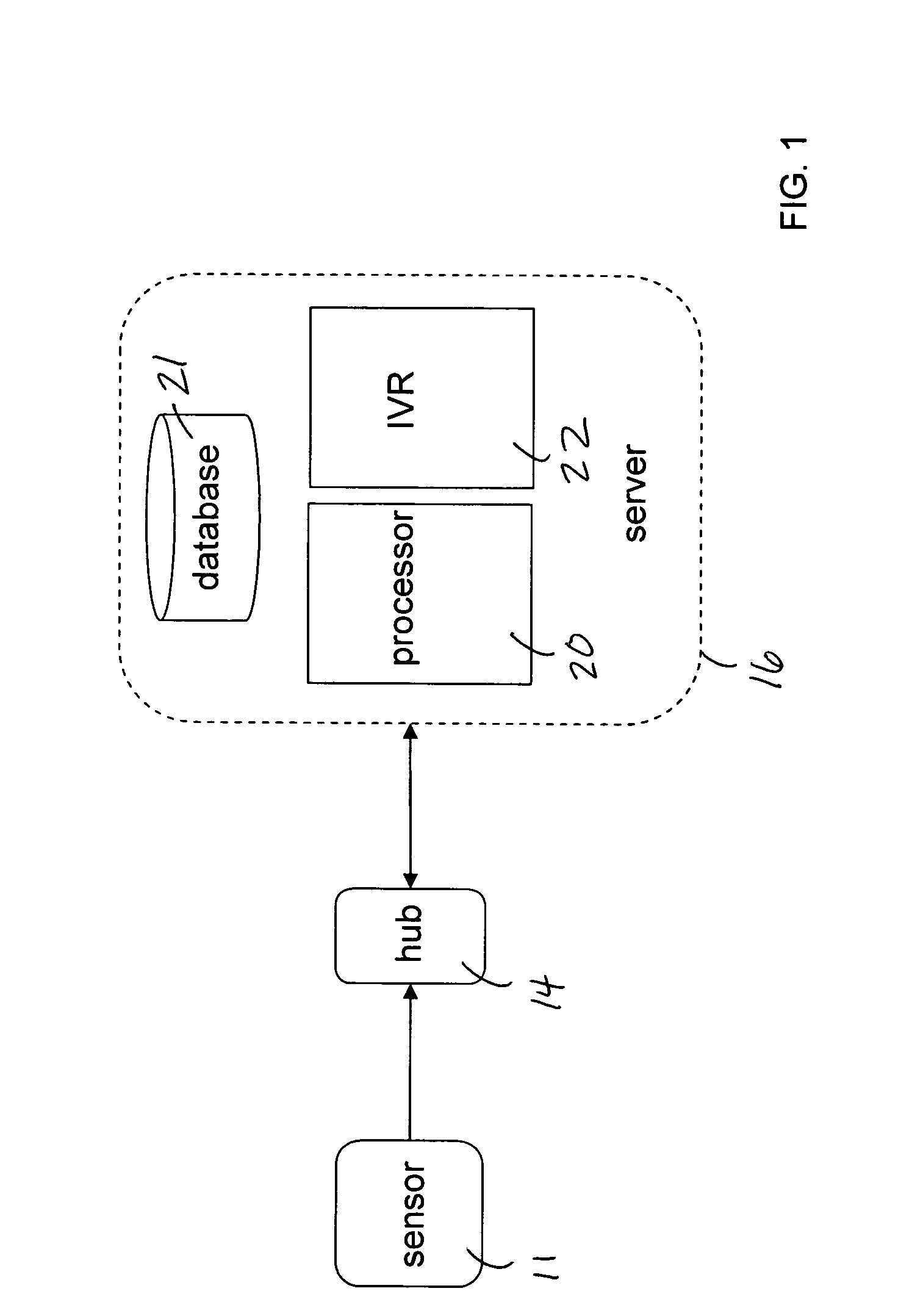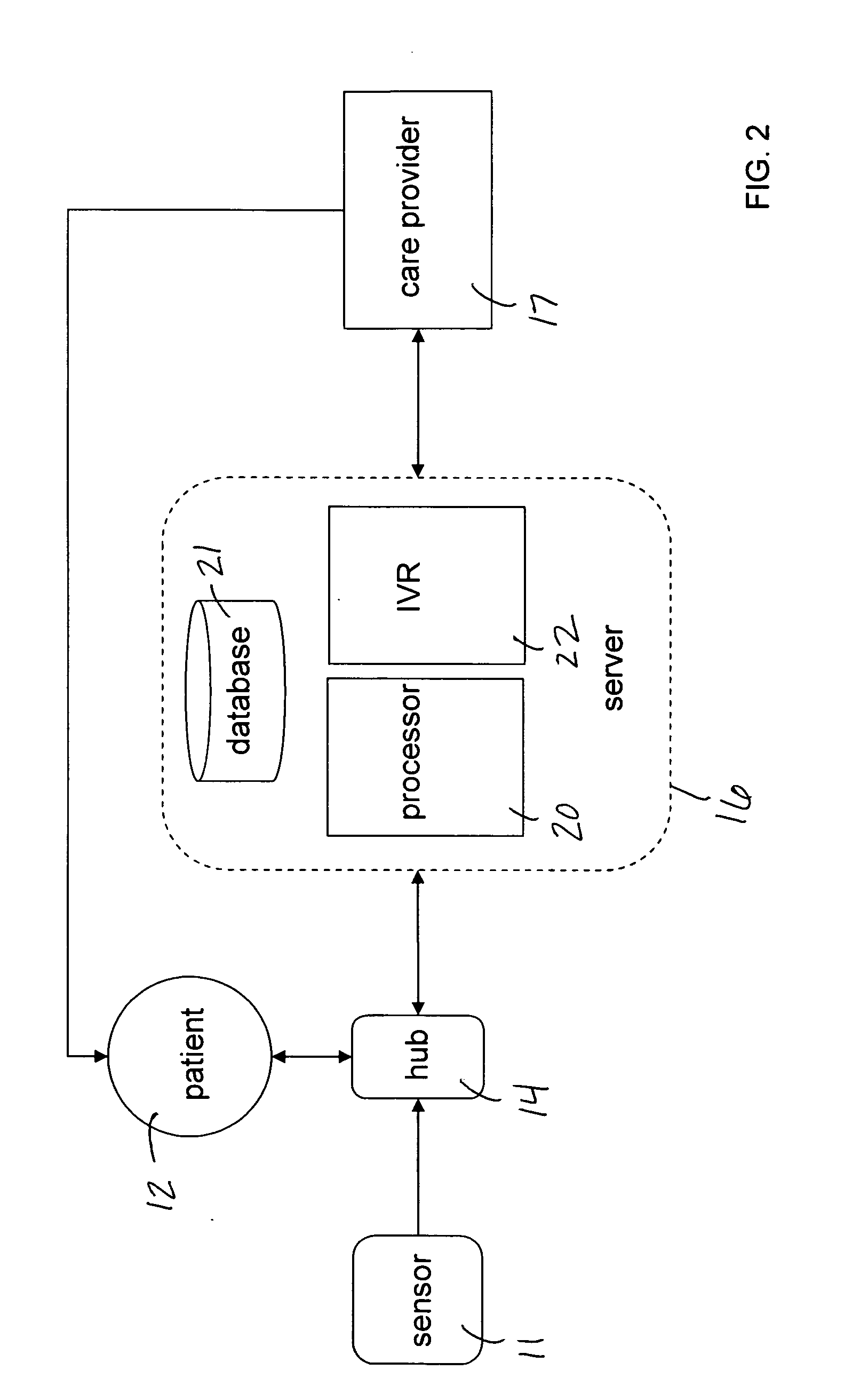Mobile patient monitoring system with automatic data alerts
a patient monitoring and data alert technology, applied in the field of diagnosis, can solve the problems of increasing health costs, improving patient health, and not meeting monitoring protocol requirements, and achieve the effect of increasing patient compliance and increasing patient compliance with monitoring protocol
- Summary
- Abstract
- Description
- Claims
- Application Information
AI Technical Summary
Benefits of technology
Problems solved by technology
Method used
Image
Examples
Embodiment Construction
[0015] The technology of the present system is illustrated in FIG. 1. The relationship of the technology to the patient and care providers is shown in FIG. 2.
[0016] Sensor
[0017] A sensor 11 is used to measure at least one physiological measurement of a patient 12. Preferably, each sensor 11 supports internal storage of the measured values, along with a date and time stamp for each measurement. Additionally, the sensor 11 may store and transmit an identifier unique to the sensor 11 or to the patient 12. The physiological measurement, alone or in combination with other data transmitted by the sensor 11, is referred to herein as “physiological data.” Any one or more sensors may be used, such as a blood glucose meter, respiratory flow meter, weight scale, pulse rate monitor, or sphygmomanometer. Mobility and ease of use of the sensors are important since chronic disease patients usually take physiological measurements several times a day. Preferably the sensors are battery-powered so ...
PUM
 Login to View More
Login to View More Abstract
Description
Claims
Application Information
 Login to View More
Login to View More - R&D
- Intellectual Property
- Life Sciences
- Materials
- Tech Scout
- Unparalleled Data Quality
- Higher Quality Content
- 60% Fewer Hallucinations
Browse by: Latest US Patents, China's latest patents, Technical Efficacy Thesaurus, Application Domain, Technology Topic, Popular Technical Reports.
© 2025 PatSnap. All rights reserved.Legal|Privacy policy|Modern Slavery Act Transparency Statement|Sitemap|About US| Contact US: help@patsnap.com



